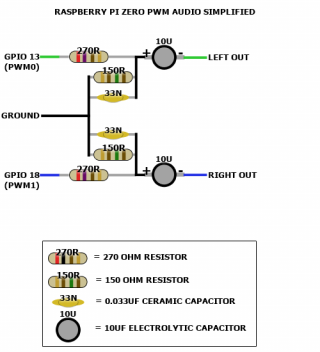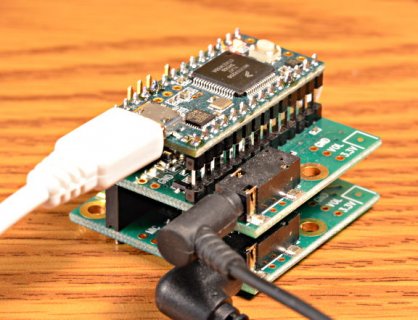Issues concerning line in/out voltage of Teensy audio shield
My two questions pertains to the line in/out of the Teensy audio output.
Firstly, I am building a project that consists of a raspberry pi zero (modified for digital pin audio output shown in reference image attached) connected to the line in of Teensy audio shield(modified for quad output as shown in the reference image). The audio shields seems to be recieving the sounds from the raspberry. However, when testing both audio shields, I noticed the top audio shield which is recieving the line in from the raspberry has reduced quality of audio. I was wondering whether I might have potentially damaged my audio shield because of lack of familiarity with the line in/out voltage. I used a mulitmeter and measured the output from the raspberry zero to be 0.68V which I think is ok for the Teensy audio shield. However. I am still wondering whether I might be inadvertently damaging my audio shield by connecting it in this manner to my raspberry?


Secondly, I then connected the line output from the Teensy audio shield to the adafruit 3G shield (shown in image below). Since the line out voltage from the audio shield is very low, I thought that this setup would be ok. I tested it for the first time with QuadChannelOutput.ino example and it worked with the music being transmitted over the phone. However, when I tested it today, it now seems that the microphone on my 3G shield could be damaged (picking up only buzzing sounds when I worked fine previously). I then disconnected the audio shield and used a simple 3G shield test and did a voice call to another phone, but the microphone of the 3G shield remains impaired. I was wondering for this case as well, whether I might have got the audio line out set up wrong (from the Teensy audio shield) causing an overvoltage to the 3G shield microphone, or could it be that the loud volume of the music (ie. QuadChannelOutput.ino wav files output) be the damaging source?

My two questions pertains to the line in/out of the Teensy audio output.
Firstly, I am building a project that consists of a raspberry pi zero (modified for digital pin audio output shown in reference image attached) connected to the line in of Teensy audio shield(modified for quad output as shown in the reference image). The audio shields seems to be recieving the sounds from the raspberry. However, when testing both audio shields, I noticed the top audio shield which is recieving the line in from the raspberry has reduced quality of audio. I was wondering whether I might have potentially damaged my audio shield because of lack of familiarity with the line in/out voltage. I used a mulitmeter and measured the output from the raspberry zero to be 0.68V which I think is ok for the Teensy audio shield. However. I am still wondering whether I might be inadvertently damaging my audio shield by connecting it in this manner to my raspberry?


Secondly, I then connected the line output from the Teensy audio shield to the adafruit 3G shield (shown in image below). Since the line out voltage from the audio shield is very low, I thought that this setup would be ok. I tested it for the first time with QuadChannelOutput.ino example and it worked with the music being transmitted over the phone. However, when I tested it today, it now seems that the microphone on my 3G shield could be damaged (picking up only buzzing sounds when I worked fine previously). I then disconnected the audio shield and used a simple 3G shield test and did a voice call to another phone, but the microphone of the 3G shield remains impaired. I was wondering for this case as well, whether I might have got the audio line out set up wrong (from the Teensy audio shield) causing an overvoltage to the 3G shield microphone, or could it be that the loud volume of the music (ie. QuadChannelOutput.ino wav files output) be the damaging source?

Last edited:

